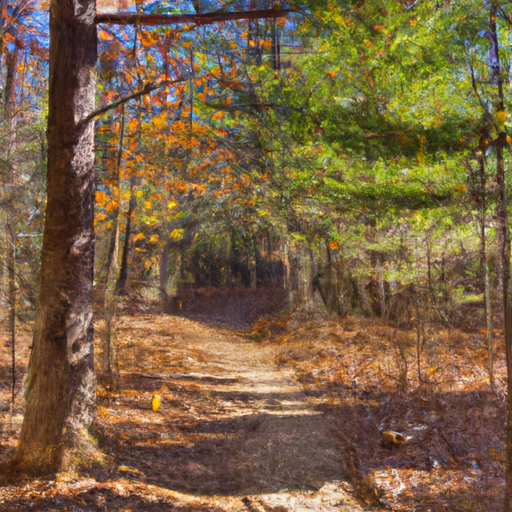Have you ever wondered how to enjoy the great outdoors without leaving a trace? In this article, we will explore simple yet effective ways to ensure that when you venture into nature, you leave it as pristine as you found it. From packing out your trash to practicing Leave No Trace principles, we will guide you on this journey of responsible and sustainable outdoor adventures. So, grab your hiking boots, and let’s discover how to leave no trace behind.
What is Leave No Trace?
Leave No Trace is an outdoor ethics program that promotes responsible behavior in the outdoors. It aims to minimize the impact that humans have on the environment while enjoying the beauty of nature. The Leave No Trace principles provide guidance on how to enjoy outdoor activities while preserving the environment for future generations.
Defining Leave No Trace
Leave No Trace is a set of principles that guides individuals on how to minimize their impact on the environment while enjoying the outdoors. It emphasizes the importance of leaving natural areas as undisturbed as possible and leaving behind no trace of one’s presence. By following these principles, outdoor enthusiasts can protect the environment, maintain the natural beauty of landscapes, and enhance the overall outdoor experience for everyone.
Importance of Leave No Trace
Leave No Trace is important because it helps to protect and preserve the natural environment. When people engage in outdoor activities without following Leave No Trace principles, they can unintentionally cause damage to ecosystems, disturb wildlife habitats, and degrade the overall quality of the environment. By teaching individuals how to minimize their impact, Leave No Trace helps to ensure that future generations can also enjoy the outdoors in its natural and pristine state.
Benefits of following Leave No Trace principles
Following Leave No Trace principles offers numerous benefits for both individuals and the environment. By packing out their trash and properly disposing of waste, outdoor enthusiasts can maintain the cleanliness of natural areas and prevent the spread of pollution. Respecting wildlife and minimizing impact on vegetation helps to preserve ecosystems and biodiversity. Additionally, Leave No Trace principles promote safety by encouraging individuals to research the area and pack the right gear and supplies, reducing the likelihood of accidents or emergencies.
Planning and Preparation
Proper planning and preparation are essential for a successful and responsible outdoor adventure. Researching the area and understanding the regulations in place is crucial to ensure compliance and avoid any negative impact on the environment or conflicts with authorities. Creating a detailed itinerary helps to stay organized and allows for effective communication with others, especially in group trips. Additionally, packing the right gear and supplies, such as reusable water bottles, proper clothing, and lightweight camping gear, ensures minimal waste generation and increased comfort during the trip.
Proper Waste Disposal
One of the core principles of Leave No Trace is proper waste disposal. Outdoor enthusiasts should always carry trash bags to pack out all their waste. This includes not only food wrappers and beverage containers but also any other trash accumulated during the trip. The “pack it in, pack it out” mindset reminds individuals to leave with everything they brought, leaving no trace of their presence behind. When it comes to disposing of human waste, it is important to follow the guidelines established by the land management agency or obtain a portable toilet or waste disposal system designed for outdoor use, if necessary.
Campsite Selection
Choosing an appropriate campsite is another crucial aspect of Leave No Trace. Whenever possible, campers should opt for designated campsites provided by the land management agency or local authorities. These designated campsites are typically established to minimize the impact on the surrounding environment and already have established fire rings and toilets. By using designated campsites, campers can concentrate their impact in one area, minimizing the overall impact on the landscape. When such designated campsites are not available, campers should select a campsite that is least likely to cause damage to fragile ecosystems and vegetation.
Campfire Ethics
Campfires are a beloved part of the outdoor experience, but it is important to follow responsible campfire ethics to minimize the risk of wildfires and to preserve the natural environment. Before starting a fire, it is critical to understand and follow fire regulations in the area. Utilizing established fire rings, pits, or designated areas is recommended, as they have been specifically designed to contain fires and prevent them from spreading. If campfires are not allowed or there is a high fire risk, it is important to seek alternative methods of cooking and warmth to reduce the impact on the environment and prevent potential accidents.
Respecting Wildlife
When venturing into nature, it is essential to observe wildlife from a distance and give them the respect they deserve. Enjoying wildlife from afar ensures their safety and minimizes stress caused by human interference. Feeding or touching wildlife should never be attempted, as it can cause harm to both the animals and humans involved. Additionally, it is crucial to store food securely to avoid attracting wildlife to campsites and potentially creating dangerous situations. By respecting wildlife and their habitats, we can preserve their natural behaviors and contribute to the overall well-being of ecosystems.
Minimizing Impact on Vegetation
Vegetation plays a vital role in maintaining the balance of ecosystems, so it is essential to minimize our impact on it. One way is by staying on designated trails, as veering off can damage fragile vegetation and disrupt habitat ecosystems. By respecting the boundaries set by the land management agency or local authorities, we can reduce the risk of erosion and protect the natural flora. Additionally, avoiding walking on fragile vegetation and using established paths or rocks when crossing sensitive areas can help minimize damage and preserve the beauty of the landscape.
Responsible Fishing and Hunting
For those who enjoy fishing and hunting, following responsible practices is crucial to maintain healthy populations and ecosystems. Obtaining the necessary permits and licenses ensures compliance with regulations and supports conservation efforts. Engaging in catch and release practices when fishing helps to preserve fish populations and promote sustainable fishing practices. Similarly, using legal and ethical hunting practices, such as obeying hunting seasons and restrictions, ensuring accurate shooting, and properly disposing of carcasses, helps to minimize the impact and maintain the balance of wildlife populations.
Leave What You Find
To protect the natural environment, it is important to leave natural souvenirs untouched. Taking rocks, flowers, or other natural items from their original location can disrupt ecosystems and disturb the natural process of natural areas. Additionally, it is crucial to avoid disturbing archaeological sites or artifacts, as they hold historical and cultural significance. By leaving these objects in place, we can ensure that future generations can also enjoy and learn from them.
Spreading the Leave No Trace Message
Spreading the Leave No Trace message is an important step towards preserving the outdoors for future generations. Educating others about Leave No Trace principles and the impact of their actions helps to raise awareness and promote responsible outdoor practices. Participating in volunteer efforts, such as trail maintenance or clean-up projects, is another impactful way to give back to the environment and ensure the longevity of outdoor spaces. By promoting responsible outdoor practices within our communities, we can create a culture that appreciates and protects the natural world.

